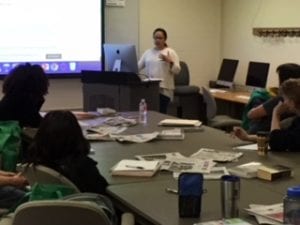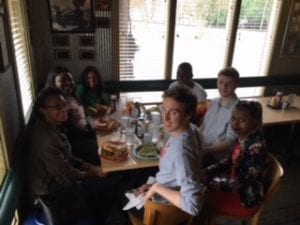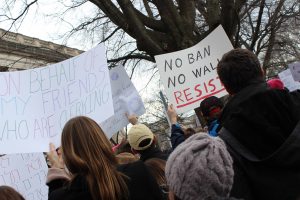By Roxane Coche, PhD
“Memphis had African Americans who refused to be silent although their lives might have been threatened. […] There was always this sense of strength and empowerment, um, in the lives and on the minds of African Americans here in Memphis.”
Beverly Robertson, Greater Memphis Chamber interim CEO
“Something is happening in Memphis. Something is happening in our world.” Dr. Martin Luther King Jr.’s words have continued to echo throughout Memphis since 1968. Activism is still alive in Memphis and has gone from picket signs to hashtags.
In Once More at the River: From MLK to BLM, about 20 local activists and officials reflect on the past fifty years in Memphis, discussing the impact of both activism and the city’s history on the lives of African Americans today.
The one-hour film will premiere on Tuesday, January 22, 2019, 6:30 p.m., in the theatre of the University Center.

One unique aspect of the documentary is that it was completed thanks to the involvement of University of Memphis students. They conducted the majority of the oral history interviews featured in the film, and a few of them have also been involved with the production of the documentary itself.
The production of the film started as the city celebrated the legacy of Dr. Martin Luther King Jr. for the 50th anniversary of his assassination. Our students took two special-topics courses, in different disciplines, to explore how the local movements for civil rights and social justice have evolved since the 1960s. A history class in Fall 2017, Memphis and the Movement, provided students with the deep context to ask the right questions and find the best answers, and the Spring 2018 journalism course, Reporting Social Justice, provided training in oral history interviewing techniques.
Our students interviewed about a dozen local activists in Spring 2018. Thanks to a grant from the University of Memphis, we were able to fund student worker and graduate assistant positions for Summer and Fall 2018, which allowed us to conduct even more interviews. Overall, we interviewed about 30 local activists of all ages about their personal experience in the civil rights and social justice movements that have shaped our city.
With more than 25 hours of interview material, selecting the quotes that would make the final cut of a one-hour documentary was no easy feat. Some valued activists and many excellent comments had to be left out for us to reach a concise storyline. In the film, our interviewees explain activism in the city from Dr. King’s assassination to MLK50, the 50th anniversary of his assassination, how activism in Memphis compares to the rest of the US, and what work remains to be done.
A grant from Humanities Tennessee and further support from the Hooks Institute have allowed us to use some professional footage in the documentary, but we have also relied on social media videos, which, as Hooks Institute Executive Director Daphene McFerren says in the film, help “highlight issues, highlight discrimination, address discrimination” in our society.
We are excited to premiere the film at the University of Memphis the day after Martin Luther King Jr. Day, but the film Once More at the River: From MLK to BLM is only one step of an ongoing story. All of our oral history interviews will soon be archived in the National Civil Rights Museum and in the Special Collections Department of the McWherter Library on the University of Memphis campus, and our website includes a discussion board to allow you to make comments, share stories, ask questions, and otherwise participate. We hope to hear from you soon!




 This year’s winner stood out among this outstanding group. The winner of the 2017 Hooks Institute National Book Award, Locking Up Our Own by James Forman, Jr.’s, is a tremendous contribution to today’s vibrant discussions about mass incarceration and the criminal justice systems that continue to devastate black communities. It provides a layer of complexity to those discussions by investigating local decisions that gave rise to mass incarceration, decisions that were often endorsed by black leaders. With a compelling personal touch, Forman frames the problem as a series of smaller decisions rather than as a massive conspiracy, providing a sense of hope that there is an opportunity to incrementally confront an incrementally-constructed system. This book is a worthy winner of the Hooks Institute’s National Book Award as it illuminates readers on a central civil rights struggle of our time.
This year’s winner stood out among this outstanding group. The winner of the 2017 Hooks Institute National Book Award, Locking Up Our Own by James Forman, Jr.’s, is a tremendous contribution to today’s vibrant discussions about mass incarceration and the criminal justice systems that continue to devastate black communities. It provides a layer of complexity to those discussions by investigating local decisions that gave rise to mass incarceration, decisions that were often endorsed by black leaders. With a compelling personal touch, Forman frames the problem as a series of smaller decisions rather than as a massive conspiracy, providing a sense of hope that there is an opportunity to incrementally confront an incrementally-constructed system. This book is a worthy winner of the Hooks Institute’s National Book Award as it illuminates readers on a central civil rights struggle of our time.





